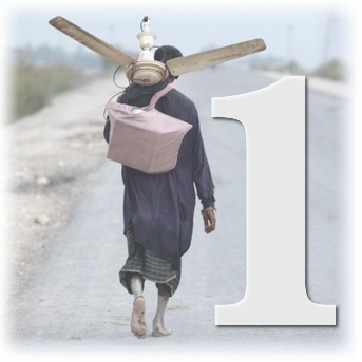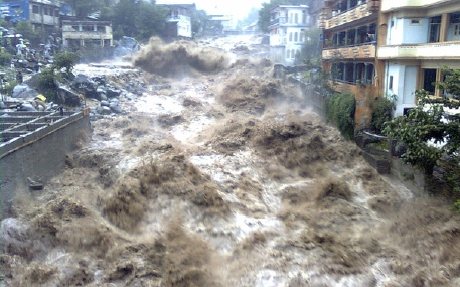Adil Najam and Owais Mughal
 There are many numbers that we can and should be thinking of today. And we will. But there is only one that counts: One.
There are many numbers that we can and should be thinking of today. And we will. But there is only one that counts: One.
That ‘one’ is you. And what you can do to make the life of just ‘one’ of the over 6.5 million people affected by the floods in Pakistan that much better.
Of course, that ‘one’ is not just you. It is also me. And all of us. And what we do, or not do, is our choice. This is the moment to make that choice. We will, each of us, make that choice separately. But we will, all of us, reap the fruits of those choices together.
That is the nature of the challenges we face. That is the nature of the responsibilities that confront us.
All the other relevant numbers continue to rise – and will nearly certainly rise further. All except this ‘one’. Here is where those other numbers stand, as of today (see earlier compilation here):
Pakistanis Affected:
13,800,000
(According to the UN this eclipses even in the 2004 Tsunami)
Death Toll:
1650+
(Estimate of 1500+ in Khyber Pakhtoonkhwa only)
Total International Aid Pledged:
US$102,000,000
(Of which only $10-20 million has been delivered thus far)
Cost to Agriculture:
US$1,000,000,000+
(US$ 1 Billion in Punjab and Khyber Pakhtoonkhwa only)
Agricultural Cropland Already flooded:
1,400,000 acres
(Also 10,000 cows have perished)
Estimated cost of rebuilding roads destroyed:
US$59,000,000
(Mostly in Khyber Pakhtoonkhwa and Punjab)
Estimated cost of rebuilding power infrastructure and dams:
US$29,500,000
(This will only worsen the existing energy crisis)
Houses Destroyed:
650,000
(In Punjab and Khyber Pakhtoonkhwa)
Boats available for rescue activities:
583
(According to NMDA numbers, 8 August)
Helicopters available for rescue activities:
41
(According to NMDA numbers, 8 August)
We have all talked a lot about this flood and the havoc it has wroght. But in all honesty I did not realize the full intensity of this event until I saw this picture below. The fury of the torrent (taken in the Swat area a few days ago) depicts what no words possibly can.
Let us close with one other picture. A picture that reminds us of the power of ‘one’, and of the responsibility of ‘one.’
Some of you may have seen this already. But look again, please. Look at the eyes of this mother. You will no doubt heard the unsaid message and that feeling of ‘be-chaargi’ – of helplessness – that is being felt by just everyone in Pakistan today. The only way to respond to helplessness is to help oneself. No one in the world will – or should – come to help us, if we do not help ourselves. So, let us please help the flood affectees of Pakistan. let us do whatever we can. Let us be the ‘one.’




















































There is only one positive outcome from all this, implement land reforms and hand over land to the haris and mazaras.
Dear ATP. Thank you for your focus on this issue. Your resolve and your words give me strength to do whatever little I can in this time of need.
Beautiful post. Yes, ultimately we all need to look at ourselves and what we can do. IF we do not rise to the occasion ourselves no one else will.
Apart from encouraging the donors the government should also encourage the general public to come and support the nation in these critical times. The masses need to be reaffirmed that their money will be well spent and will not be going down the drain. Corruption is relief operations must not be tolerated. The support of allies will increase if they are sure of transparency in these efforts
Thirst for Indus water upped flood risk
http://www.newscientist.com/article/mg20727730.101 -frozen-jet-stream-links-pakistan-floods-russian-f ires.html
Oh look, pakistan mismanagement of its river is
also to blame.
“The Indus drains the Himalayan mountain chain and carries vast amounts of sediment. As more water is diverted into irrigation, the river flow has been severely reduced, and can’t now carry its accustomed cargo of sediment downstream. A growing number of levees and man-made channels also trap sediment on its way out to sea.”
“Antiquated irrigation systems in Pakistan may also have made the problem worse. “Pakistan unfortunately has one of the worst irrigation efficiencies in the world,”